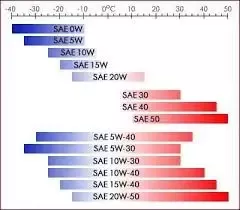The timing belt and gears in a vehicle are essential components that work together to ensure the smooth operation of the engine and transmission system. Understanding the relationship between the timing belt and gears is crucial for maintaining the overall performance of the vehicle. In this article, we will delve into the impact of the timing belt on gears and address common questions related to this topic.
What is a Timing Belt?
Before diving into the relationship between the timing belt and gears, it’s important to understand the function of a timing belt. The timing belt, also known as a cam belt, is a crucial part of an internal combustion engine. It synchronizes the rotation of the crankshaft and the camshaft, ensuring that the engine’s valves open and close at the right times during the intake and exhaust strokes. This synchronization is essential for the proper operation of the engine.
How Does a Timing Belt Affect Gears?
The timing belt plays a significant role in the overall operation of the engine, and by extension, the transmission system. The timing belt ensures that the camshaft and crankshaft are synchronized, allowing the engine to run smoothly. Without proper synchronization, the engine’s valves may not open and close at the right times, leading to a loss of power and efficiency.
When the timing belt is in good condition and functioning properly, it directly impacts the operation of the gears in the transmission system. The timing belt ensures that the engine’s valves open and close in sync with the movement of the pistons, which in turn affects the rotation of the gears in the transmission. In essence, the timing belt directly influences the timing and operation of the gears in the transmission system.
Symptoms of a Bad Timing Belt and Its Impact on Gears
A failing or broken timing belt can have detrimental effects on the gears and overall performance of the vehicle. Some common symptoms of a bad timing belt include unusual sounds coming from under the hood, engine misfires, and poor engine performance. If the timing belt fails, the engine may not run at all, leading to a loss of power and the inability to shift gears effectively.
In the context of the transmission system, a bad timing belt can lead to shifting problems and difficulties in changing gears. This is due to the fact that the timing belt is responsible for ensuring the proper timing and synchronization of the engine’s components, which directly impacts the operation of the transmission gears.
Transmission and Timing Belt Relationship
While the timing belt is not directly part of the transmission system, its impact on the engine’s operation has a ripple effect on the transmission. The timing belt ensures that the engine runs smoothly, which in turn affects the ability of the transmission to shift gears effectively. Therefore, a well-functioning timing belt is essential for the overall performance of the transmission system.
Read More: How Many Timing Belts in a Car?
Conclusion
In conclusion, the timing belt plays a crucial role in the operation of the engine, which in turn affects the transmission system and the gears. A well-functioning timing belt ensures the proper timing and synchronization of the engine’s components, leading to smooth operation and effective gear shifting. On the other hand, a failing or broken timing belt can have detrimental effects on the gears, leading to shifting problems and a loss of overall performance.
It is essential to regularly inspect and maintain the timing belt to ensure its proper function and prevent potential issues that may impact the gears and transmission system. By understanding the relationship between the timing belt and gears, vehicle owners can take proactive measures to maintain the overall performance and longevity of their vehicles.


